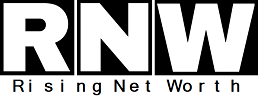Review your goals, budget, and financial protections to finish the year strong.
Whether 2025 has flown by in a blur or dragged its feet, now is the perfect time to ask: Am I on track with my finances?
Just like you might schedule a physical check-up or review your car’s maintenance, a mid-year financial check-in is a proactive way to catch small issues before they turn into bigger ones. It helps you take control of your money—not the other way around.
Maybe you’ve had a big life change—like a new job, a growing family, or a major purchase. Maybe your goals have shifted, or your spending habits have crept off course. Whatever the case, this check-in is your opportunity to revisit your budget, evaluate your savings, reassess your insurance, and make sure you’re still building toward the future you want.
Revisit Your Financial Goals

At the start of the year, you likely set some financial goals—whether it was building an emergency fund, paying off a credit card, saving for a vacation, or contributing more to your retirement account. Now that we’re halfway through the year, it’s time to assess your progress and determine whether your goals still make sense.
Start by pulling out your original list of goals or reflecting on what you intended to achieve. Ask yourself:
- Which goals have I met or made progress on?
- Which ones have stalled or fallen off my radar?
- Have my priorities shifted at all?
Financial goals aren’t set in stone. They’re meant to act as living targets that should evolve alongside your lifestyle. If you bought a home, welcomed a new child, or took on new responsibilities, your financial needs may look very different than they did in January.
Now is the perfect time to realign to ensure you can meet your goals. Break big goals into smaller, actionable steps you can take over the next 3–6 months.
Update Your Budget

Once you’ve realigned your financial goals, the next step is to make sure your budget reflects your reality. A lot can change in six months—new bills, shifting income, or even subtle lifestyle creep (hello, daily coffee runs or forgotten streaming subscriptions).
Start by reviewing your last 2–3 months of bank and credit card statements. Look at your spending by category:
- Are you overspending in any areas—like dining out, subscriptions, or shopping?
- Have your fixed expenses changed—such as rent, insurance premiums, or utility bills?
- Are you meeting your savings goals consistently?
This type of review helps you see where your money is actually going—not just where you think it’s going.
If you find yourself frequently going over budget or relying on credit cards to get through the month, it may be time to rebalance your allocations. Small tweaks like cooking at home more often, canceling unused memberships, or setting up automatic savings transfers can make a meaningful difference over time.
Don’t forget to account for upcoming expenses. Big-ticket items like back-to-school shopping, holiday travel, or home maintenance costs can derail your budget if you don’t plan for them in advance. Add sinking funds or temporary budget categories for these seasonal needs.
Review Emergency Savings

If the first half of the year has taught you anything, it’s that life happens. That’s why your emergency fund is one of the most important tools in your financial toolbox. Whether it’s a surprise car repair, a medical bill, or a sudden change in income, having cash set aside can turn a potential crisis into a manageable inconvenience.
Start by taking stock of your current emergency fund:
- How much do you have saved?
- How many months of essential expenses would that cover?
- Have you had to dip into it recently—and if so, have you started rebuilding it?
Financial experts typically recommend keeping three to six months’ worth of essential expenses in an easily accessible, interest-earning account. But your ideal number may vary depending on your situation.
Revisit Life Insurance

Life insurance is a cornerstone of any long-term financial plan, but it’s one people often overlook until it’s too late. If your family has grown, you’ve bought a home, or your income has changed this year, now is the time to reassess whether your current coverage is still sufficient.
If you don’t currently have life insurance, consider starting with term life insurance—an affordable option that offers peace of mind for a specific period (typically 10–30 years). Unlike whole life insurance, term policies are straightforward and cost-effective, especially for young, healthy individuals.
Check Your Credit & Debt

Debt and credit health are two sides of the same coin—and both deserve a closer look during your mid-year financial check-in. Keeping your debt under control and your credit score in good shape can open doors for future opportunities, like lower interest rates, better loan terms, and more financial flexibility.
Start by pulling your credit report. You can access one free report per year from each of the three major bureaus (Equifax, Experian, and TransUnion) at AnnualCreditReport.com.
Review it for:
- Accuracy: Are your personal details and account statuses correct?
- Outstanding accounts: Are there balances you’ve forgotten or missed payments?
- Potential red flags: Look for unfamiliar accounts that could signal identity theft.
Next, take stock of your current debt—credit cards, student loans, auto loans, personal loans, or a mortgage. Ask yourself:
- Am I making more than the minimum payments?
- Are my interest rates manageable, or is a high-interest debt dragging me down?
- Can I consolidate or refinance any balances to reduce my monthly burden?
If you’re carrying credit card balances, consider using the “avalanche” or “snowball” method to pay them down faster. Both are effective—it just depends on what keeps you motivated.
Reassess Retirement Contributions
Retirement might feel like a far-off milestone, but the steps you take today can dramatically shape the quality of your financial future. A mid-year check-in is the perfect time to evaluate your retirement savings strategy, see how your contributions are stacking up, and make adjustments if needed.
Start by reviewing your current retirement accounts:
- Are you contributing regularly to a 401(k), IRA, or other retirement plan?
- Have you received a raise or bonus that could allow you to increase your contributions?
- Are you on pace to max out your annual contribution limits?
Even if you can’t max out your contributions, small increases—like bumping your 401(k) contribution from 6% to 8%—can lead to significant long-term gains.
Also, take this time to check in on your investment allocations. Are you too aggressive or too conservative based on your age, risk tolerance, and goals? Most retirement platforms offer risk assessment tools or target-date funds that automatically adjust your portfolio over time.
Life changes fast. What made sense in January may no longer fit your current reality. That’s why this kind of check-in is so important. It helps you stay aligned with your evolving priorities. Whether you’re catching up, staying the course, or getting ahead, even small changes made now can create major momentum by year’s end.









